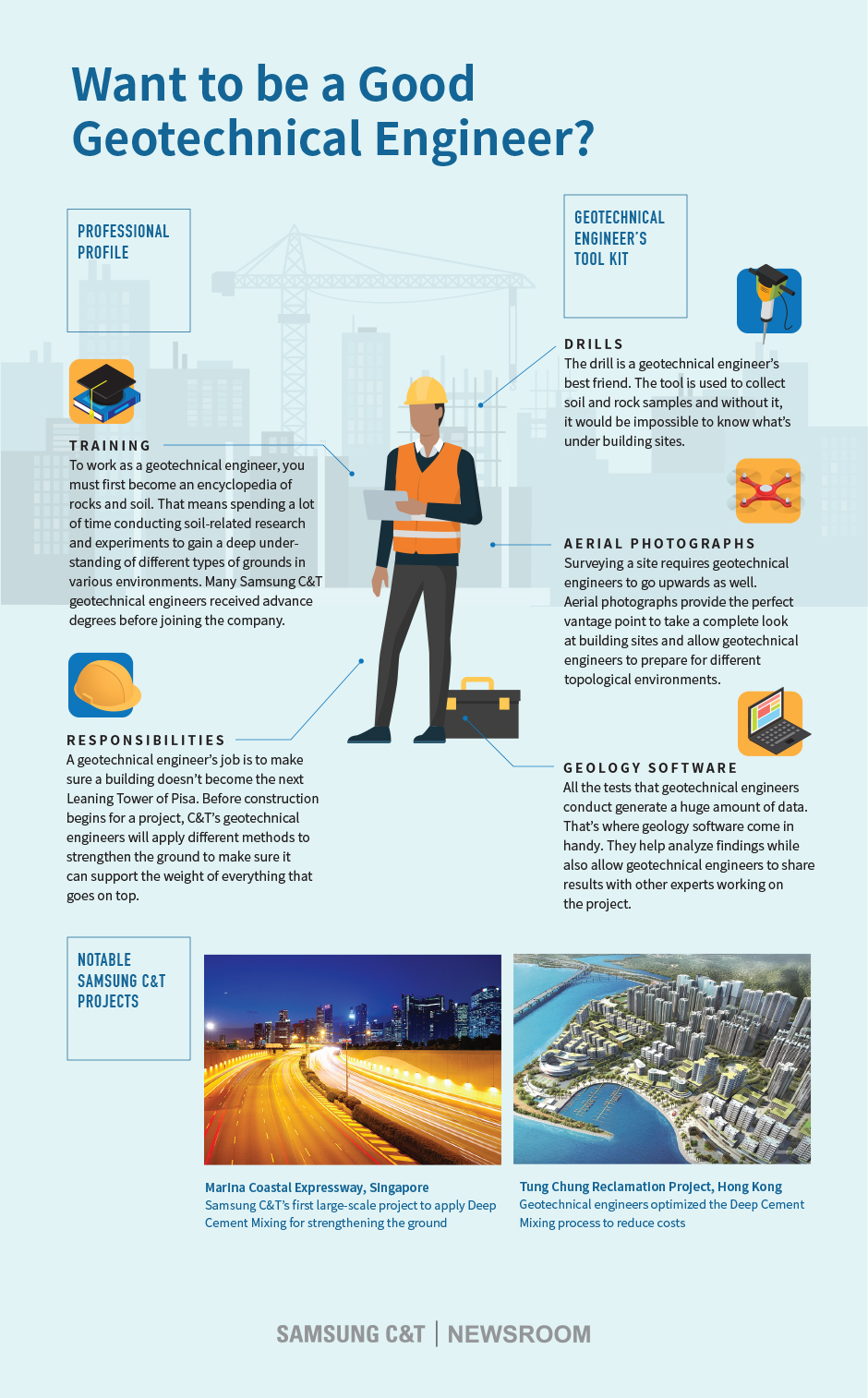The 3-Minute Rule for Geotheta
The 3-Minute Rule for Geotheta
Blog Article
The Geotheta Statements
Table of ContentsThe Of GeothetaSome Of GeothetaSome Known Factual Statements About Geotheta The Basic Principles Of Geotheta
They collaborate with civil engineers, architectural designers, designers, and other specialists to incorporate geotechnical factors to consider right into the overall job style and building and construction process. This needs efficient teamwork, control, and interaction to ensure that the geotechnical aspects straighten with the job goals and satisfy regulatory demands.Mining & Products Engineering: Concepts of boring, penetration rates, and factors influencing the option of boring technique. Blowing up techniques in surface and below ground functions. Mechanical and continual methods to fragmentation, including longwall shearing and fullface boring.
Modelling of piece and fragment size distributions; comminution as a transfer feature. Comminution innovation: crushing, grinding, dimension classification. Integrated analysis of fragmentation and comminution operations. Used by: Mining & Materials Engineering.
The 30-Second Trick For Geotheta
Bachelor's degree programs in civil, geotechnical, geological, and environmental engineering generally last four years and consist of basic education and learning courses in English, social science, and the liberal arts, along with training courses in advanced mathematics, architectural geology, and fluid mineralogy. (https://geotheta.weebly.com/)
Geotechnical design includes the evaluation of the dirt and rock problems at a certain website, and their ramifications for the development of that site. As the majority of structures depend on the ground for assistance, it is without surprise that an in-depth understanding of the ground problems, and the viability of foundation systems, are essential to the long-term stability and efficiency of the structure or structure.
Specialising in the investigation of geological formations and ground behavior, geotechnical engineers execute clinical investigations and testing to understand the influence these geological developments might carry the design and construction of building, civil and facilities tasks. This knowledge is critical for the layout and building of structures, roadways, passages, dams, bridges, and water system and sewer systems.
The geotechnical team at Douglas Allies consistently seek advice from designers, design engineers, developers, and building contractors to make referrals on layout and growth proposals to make sure that the developed structures are appropriately designed for the ground conditions. As an example, the style of footing systems needs to think about the weight of the structure, the ability of the ground to sustain that weight along with motion resistances and reliable building and construction.
The 6-Minute Rule for Geotheta
This task is considerably streamlined by the use our Douglas Map geospatial platform which makes this info readily easily accessible in an easy to make use of web browser interface. A geotechnical engineer will guide the boring of boreholes and test pits to gather dirt and various other examples, and also assess surface area features and ground direct exposures to form a geotechnical design of the subsurface problems.
Depending on the project kind and ground problems came across, laboratory testing might to name a few points assess stamina, compressibility, reactivity and/or leaks in the structure of soil and rock examples. Hereafter data is collected and collected, the outcomes are used for a geotechnical design of the site, which is normally presented as areas throughout the site.

A geotechnical examination naturally can just examine the ground problems at the areas pierced or dug deep into. Natural variations in dirt and rock problems can happen throughout a website and in between examination areas. It is as a result good technique that the geotechnical engineer be preserved throughout building of the project to provide on-site confirmation that the ground conditions come across are regular with the expectations and advice provided in the geotechnical examination record.
The smart Trick of Geotheta That Nobody is Discussing
Geotechnical designers utilize their extensive expertise of dirt and rock to analyze danger and resolve troubles on varied infrastructure projectsGeotechnical design is a specialist branch of civil design which checks out the behavior of planet materials and the application of dirt and rock mechanics. Engineer of Record. As a geotechnical designer, you will analyze the physical, mechanical and chemical homes of soil and rock in order to make foundations, keeping frameworks and earthworks
Geotechnical engineering is very closely connected to and overlaps with, both design geology and ground design - https://justpaste.it/ec966. It's possible to specialise in geotechnics or help a geotechnical company yet be referred to as an engineering geologist or a ground designer. As a geotechnical designer, you'll require to: develop and maintain partnerships with customers and other professionals entailed in the website, throughout each projectmaintain safety standards on site bear in mind price ramifications when you make recommendationsstudy geological blog here maps and airborne pictures from a series of sources and from various time periodsexamine building and construction prepares to see just how practical they are based on your understanding of the siteinvestigate threats or geological risks for the sitesearch for environmentally sensitive functions, such as garbage dump start to create factual and expository ground modelsplan field investigationsdrill and evaluate samples of bedrock, dirt, groundwater and extra products supervise various other professionals on sitesolve technological issues as they arise, such as unexpected frameworks at drill sitesmonitor problems during and after construction to see to it structures are stable in the short and lengthy termadding data accumulated on website to your initial researchcreating geotechnical calculations, illustrations, and 2 or three-dimensional computer models analyzing the datamaking recommendations regarding the proposed use the website

Report this page